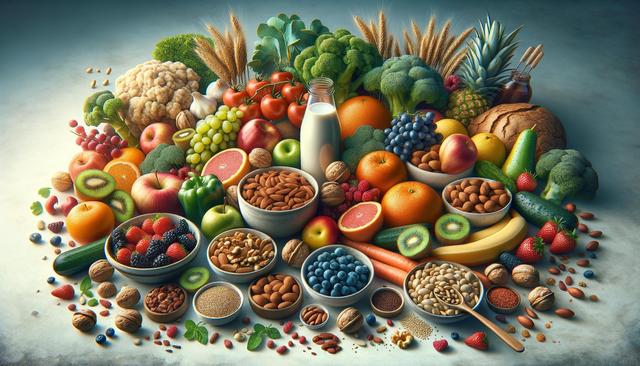The Role of Nutrition in Survival Scenarios
In survival situations, whether due to natural disasters, outdoor emergencies, or long-term isolation, nutrition becomes a top priority. The body needs energy, vitamins, and minerals to maintain essential functions, fight off illness, and heal from injuries. Poor nutrition can significantly reduce the survival rate, especially when access to medical resources is limited. Foods that are calorie-dense and nutrient-rich provide not only sustenance but also contribute to mental clarity and physical endurance—two critical factors in life-threatening conditions.
It’s important to focus on macronutrients: carbohydrates for energy, protein for muscle repair, and fats for long-lasting fuel. Micronutrients like vitamin C, iron, and potassium play a key role in immune health, oxygen transport, and fluid balance. Dehydration and malnutrition can set in quickly without a balanced intake. In short, proper food choices can greatly influence survival outcomes, strengthening both the body and the mind under duress.
Top Shelf-Stable Foods to Stockpile for Emergencies
When planning for emergencies, having a stock of non-perishable, nutrient-dense foods is a smart move. These foods should require minimal preparation, have long shelf lives, and offer a range of essential nutrients. Some examples include:
- Dehydrated fruits and vegetables
- Canned beans, fish, and meats
- Whole grain crackers and oats
- Powdered milk and protein powders
- Nut butters and seeds
Each of these options provides essential calories and nutrients that help maintain energy and health. For example, canned fish is rich in omega-3 fatty acids and protein, while oats offer complex carbohydrates and a good source of fiber. Having a variety ensures not only nutritional adequacy but also helps prevent food fatigue, which can negatively impact morale.
Foraging and Natural Food Sources in the Wild
In survival scenarios where pre-packed food is unavailable, knowing how to forage can make a critical difference. Wild plants, insects, and small game can all be viable food sources if identified and prepared correctly. Edible plants like dandelion greens, wild berries, and cattails are common in many regions. However, knowledge is key—some wild edibles are toxic and can do more harm than good.
Additionally, insects such as crickets and grasshoppers are high in protein and can be safely consumed when properly cooked. Fishing and trapping small animals also provide additional protein sources. When foraging, it’s important to follow these rules:
- Only eat plants you can positively identify as safe
- Avoid anything with a bitter or soapy taste
- Cook all wild game thoroughly to kill parasites
Foraging skills not only extend food supplies but also build confidence and resourcefulness—qualities that improve overall survival chances.
Hydration and Its Impact on Survival
While food is crucial, water is even more essential. Humans can survive for weeks without food but only a few days without water. Dehydration affects cognitive function, physical strength, and organ health. In survival conditions, finding and purifying water should be a top priority. Boiling water, using purification tablets, or filtering through a portable device are all effective methods.
Some foods can also contribute to hydration. For instance, fruits like oranges and cucumbers have a high water content. In arid environments, cactus pulp and dew collection can provide small but vital sources of hydration. Always be cautious of contaminated water sources, as they can lead to illnesses that drastically reduce survival chances.
Maintaining electrolyte balance is another key aspect. Loss of sodium, potassium, and magnesium through sweat or diarrhea can impair muscle function and heart rhythm. Including rehydration salts or electrolyte tablets in an emergency kit can compensate for this loss and support overall health.
Planning for Long-Term Survival: Balanced Diet and Mental Resilience
For long-term survival situations, it’s vital to plan meals that support both physical and mental health. Nutritional deficiencies can lead to scurvy, anemia, or weakened immunity, all of which lower the survival rate. A diet with variety and balance helps prevent these issues. This includes rotating food supplies, supplementing with vitamins when necessary, and incorporating whatever fresh food sources become available.
Mental resilience is often overlooked but is just as important. Eating familiar or comforting foods can boost morale and reduce stress. Spices, teas, and small treats may seem non-essential but can make a significant psychological difference. When the body is fueled correctly, it can better handle stress and physical exertion, directly influencing survival outcomes.
Proper planning, including food variety and nutritional value, increases the likelihood of surviving extended periods with limited resources. Regularly reviewing and updating your emergency food stock ensures readiness and reduces the risk of food spoilage or nutrient loss over time.
Conclusion: Smart Food Choices for Better Survival Odds
Survival isn’t just about having food—it’s about having the right food. From stockpiling nutrient-dense staples to understanding how to forage and stay hydrated, every decision impacts your endurance and well-being. Whether you’re planning for emergencies or preparing for an outdoor adventure, making informed food choices enhances not only your physical survival but also your mental strength. Equip yourself with knowledge and resources, and you’ll be better prepared to handle whatever challenges come your way.


